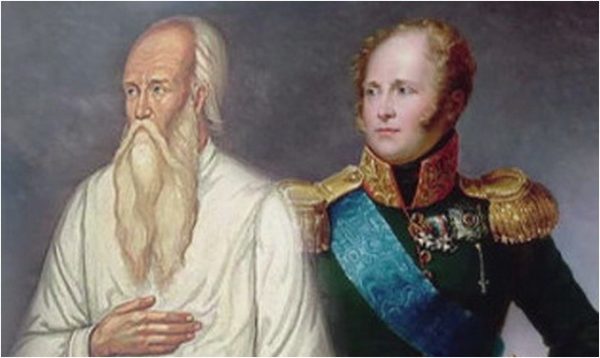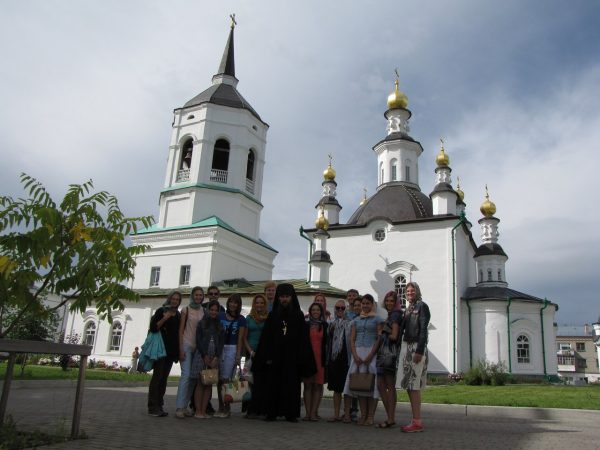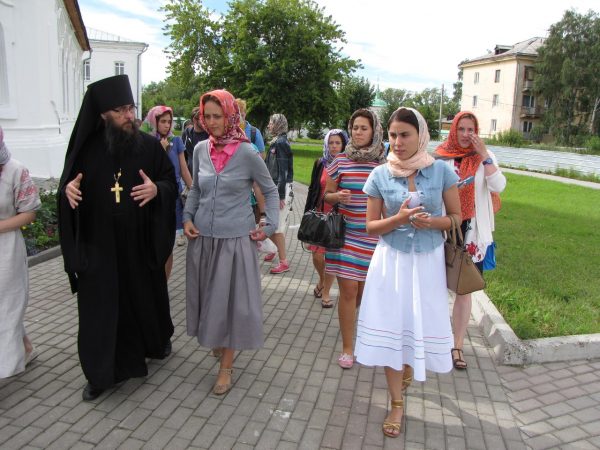Saint Elder Feodor of Tomsk

Is Saint Elder Feodor of Tomsk and the Russian Emperor Alexander I one and the same person?
It all began with...
Our wonderful Siberian city is full of different legends. The most exciting mystery is connected with the name of Elder Feodor of Tomsk. The history of Saint Feodor of Tomsk begins with the mysterious death of the Russian Emperor Alexander I. Alexander was a fierce critic of his father`s policy. His father, the Russian Emperor Paul I was killed on March 11, 1801. Historians still debate Alexander’s role in his father's murder. Alexander was deeply affected by his father`s death. According to a widespread legend, the Russian emperor Alexander I faked his death in Taganrog in 1825 to become a hermit. The first records of Feodor Kuzmich date back to 1836 when he was arrested for vagrancy in Perm. Feodor Kuzmich had no identity papers on him and after whipping he was exiled to Siberia. He lived in Tomsk for the last 6 years of his life. During the lifetime of Feodor Kuzmich in Siberia there were strong rumors about his being the former emperor. In contrast to how a Emperor would live, Saint Feodor lived a simple life. His home was a small cell with narrow windows. The old man slept on a wooden bed. His clothes were simple. In summer he wore a long white shirt made of village linen. He had only two shirts, belted with a thin strap or rope, and he also wore wide trousers made of linen. In winter he put on a long dark-blue robe over the shirt or if he went out in the cold he put on an old faded Siberian fur-coat. His lunch usually consisted of black bread or dried crusts soaked in plain water. Strong arguments that the Elder Feodor was really Alexander I was that he knew foreign languages, geography, the history of the War of 1812 (he had defeated Napoleon) and the court life of St. Petersburg.

It is true?
However, historians are still uncertain whether he was the former Russian emperor. Although there are no documents confirming this legend, it could be supported by testimonies from contemporaries and some indirect evidence. A coal heaver from the Emperor’s house who was exiled in Siberia recognized Emporer Alexander I, disguised as the hermit Feodor Kuzmich. Alexander was also recognized by a former soldier, who remembered the Emperor from the time of his service at the palace in St. Petersburg. One former state employee also recognized him and even fainted when she heard a familiar voice. Feodor Kuzmich received a visit from Alexander II in 1837 and his grave was visited by Nicholas II. Moreover, graphology experts have confirmed that the handwriting of Elder Fyodor of Tomsk and that of Tsar Alexander I is identical. Svetlana Semenova, President of the Russian Graphological Society, who analyzed manuscripts written by the emperor and the Elder Fyodor, said that they contain the handwriting of one and the same man.
Saint Elder Feodor Kuzmich

During his life, the old man had a gift of healing. People from different parts of the province came to him with various problems. And nowadays Elder Feodor, the patron saint of Tomsk is often prayed to for help. The saint elder’s relicts which are kept in the Bogoroditse-Alekseevsky monastery in Tomsk are prayed to and show strong evidence for Saint Feodor being Alexander I.
Testimonials
Lauren tells about her visit to the monastery
Jenny shares her emotions associated with the history of the Elder. Unfortunately Jenny was not able to take a live tour of the monastery.
Glossary
- Kuzmich - middle name in Russia, name of father.
- Rope -material for clothiers
- Fur-coat - is clothing made of furry animal hides
- Healing- miracle
- Relic-in religion, a relic usually consists of the physical remains of a saint or the personal effects of the saint or venerated person preserved for purposes of veneration as a tangible memorial. Relics are an important aspect of some forms of Buddhism, Christianity, Hinduism, Shamanism, and many other religions. Relic derives from the Latin reliquiae, meaning "remains," and a form of the Latin verb relinquere, to "leave behind, or abandon." A reliquary is a shrine that houses one or more religious relics.
- Monastery - a monastery is a building or complex of buildings comprising the domestic quarters and workplaces of monastics, monks or nuns, whether living in communities or alone (hermits). A monastery generally includes a place reserved for prayer which may be a chapel, church or temple, and may also serve as an oratory
- Bogorodice- that is Russian equivalent to the Virgin
Resourses
http://tbam.ru/
http://www.johnsanidopoulos.com/2012/11/was-saint-feodor-of-tomsk-really.html
http://www.angelfire.com/pa/ImperialRussian/royalty/russia/tsar15.html
http://geomerid.com/en/place/945/
http://travel-tomsk.ru/index.php?page=obj&mod=eng&id=32
http://www.nsad.ru/articles/starec-fedor-kuzmich-propavshij-imperator-poyavivshijsya-svyatoj
http://petripavel.tomsk.ru/openArticle.php?number=25
http://pravoslavie.tomsk.ru/saints/23/
http://www.pravda.ru/faith/religions/orthodoxy/18-09-2012/1128418-feodor_tomskiy-0/
http://www.johnsanidopoulos.com/2012/11/was-saint-feodor-of-tomsk-really.html
Authors
Elena Kharapudchenko
Jenny Stenson Strange